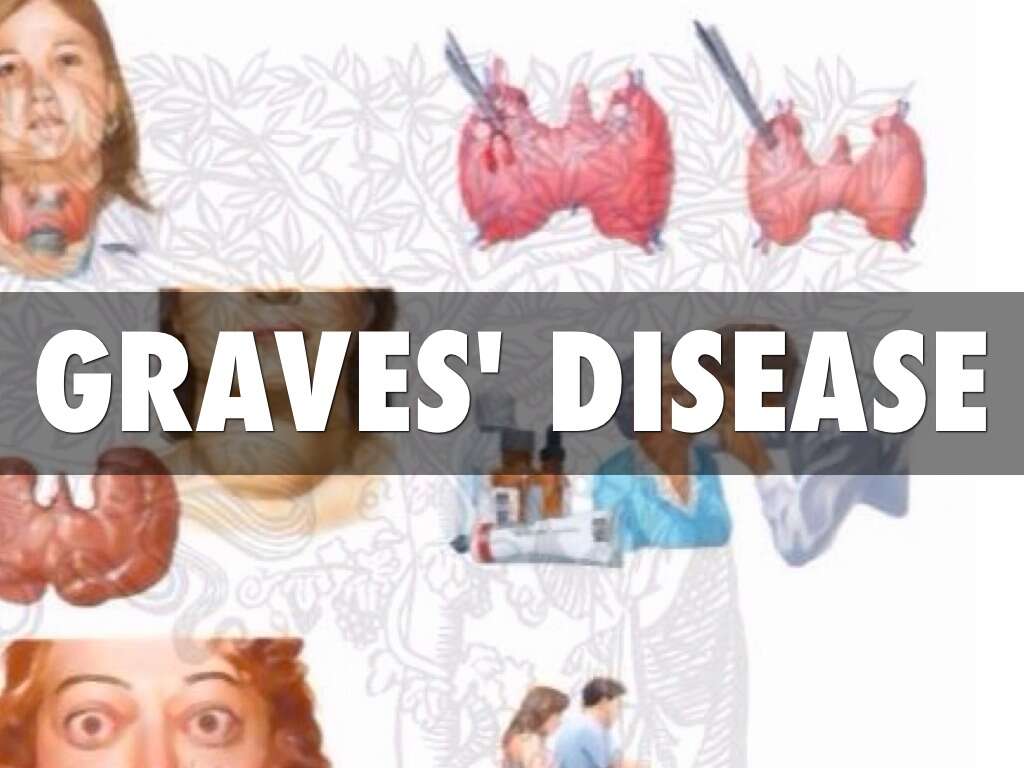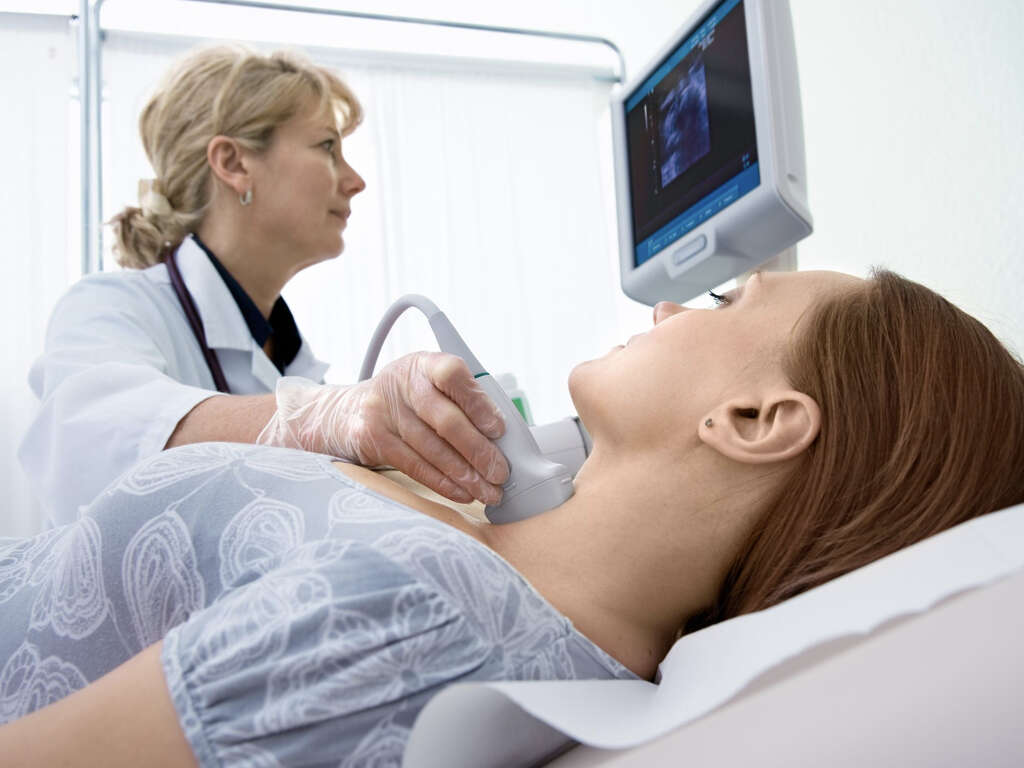10 Graves' Disease Symptoms
Graves’ disease is a condition that is also known as toxic diffuse goiter. It is an autoimmune disease that affects the thyroid gland located in front of your neck. Antibodies, known as thyroid-stimulating immunoglobulins (TSIs), can bind to thyrotropin receptors (thyrotropin is a hormone produced in the pituitary gland that normally stimulates the thyroid). Thus, activation of these receptors occurs, and the gland is stimulated to grow and increase the production of thyroid hormone.
Graves’ disease usually results in hyperthyroidism or the over activity of the gland. This leads to the excessive release of thyroid hormones and the acceleration of metabolism in tissues. While the exact cause of Graves’ disease is unclear, experts believe that it occurs due to a combination of environmental and genetic factors. Furthermore, there is a higher likelihood of the disease if there is a positive family history. Graves’ disease has been observed to occur in 0.5% of males and 3% of females. It usually starts between the ages of 40 to 60 years old.
Researchers believe that the onset of Graves’ disease is possibly triggered by infection, stress, or childbirth. Those with other autoimmune diseases (i.e. diabetes type 1 and rheumatoid arthritis) are more likely to be affected. The diagnosis of Graves’ disease is made clinically and confirmed with blood tests and radioiodine uptake. Treatment options include radioiodine therapy (taking iodine-131 orally which destroys the thyroid gland over weeks to months), thyroid surgery, and medications. The resulting hypothyroidism is then treated with synthetic thyroid hormones.

Symptom #1: Graves' Ophthalmopathy
Graves’ ophthalmopathy is also known as thyroid eye disease or thyroid-associated orbitopathy. It is an autoimmune condition that causes the swelling of the tissues (muscles and fat) behind the eye and the surrounding areas. This inflammation can cause an abnormal protrusion of the eye, also called exophthalmos, the retraction of eyelids, and the excessive exposure of the cornea (a transparent tissue that covers the external part of the eye). All these changes may lead to excessive tearing, gritty sensation in the eye, photophobia (excessive sensitivity to light), and double vision. In severe cases, the muscles of the eyeball can become stiff and cause an inability to move the eye. Corneal ulcerations and loss of vision (due to increased pressure on the optic nerve) can rarely occur.

Symptom #2: Goiter
A goiter is a swelling in the neck due to the enlargement of the thyroid gland. Globally, approximately 90% of goiters are due to iodine deficiency. A goiter can be associated with either hypothyroidism (low thyroid hormones) or hyperthyroidism (high levels of thyroid hormones) and can lead to other symptoms.
Some of the symptoms of hyperthyroidism include palpitations, tremors, high blood pressure, and heat intolerance. In hypothyroid cases, affected individuals may have a poor appetite, intolerance to cold, lethargy, constipation and more.

Symptom #3: Pretibial Myxedema
Pretibial myxedema is a condition also known as Graves’ dermopathy, myxedema tuberosum, or thyroid dermopathy. It is a rare complication of Graves’ disease, occurring approximately in 1 to 5% of patients. Pretibial myxedema is usually preceded by eye symptoms (Graves ophtalmopathy) such as exophthalmos, lid lag, and more.
Pretibial myxedema presents as a localized region of indurated, red and swollen skin, often described with an orange peel appearance. It is also referred to as a non-pitting edema, given that when it is pressed with a finger, an indentation in the skin is not observed. It usually appears on the anterior aspect of the shin and dorsum of the feet. Severe cases may involve the trunk, upper limbs, face, neck, chest, back, and even ears. These lesions result from the deposition and buildup of carbohydrates in the skin (i.e. hyaluronic acid), thus take a long time to resolve.

Symptom #4: Insomnia
Insomnia is a medical term that refers to sleeplessness. It is a sleep disorder where the affected individual has difficulty falling asleep, staying asleep, or sleeping long enough. Insomnia usually causes excessive daytime sleepiness, irritability, low levels of energy, and a depressed mood. It can also increase the risk of road traffic accidents, affect learning, and decrease concentration.
Depending on the duration, insomnia can be short-term or long-term (if lasting more than a month). Insomnia can be caused by many conditions such as Graves' disease, psychological stress, heart failure, chronic pain, heartburn, menopause, side effects of medications, caffeine, alcohol, and nicotine, treatment is based on the diagnosis of the underlying cause.

Symptom #5: Tremors
A tremor is an involuntary movement that can be rhythmic, occurring due to contraction and relaxation of muscles and involving oscillations and twitching of parts of the body. It most commonly affects the hands, arms, face, head, eyes, trunk, legs, and even vocal folds (voice).
Most tremors affect the hands and are often a symptom of an underlying disorder. In Graves' disease, the overactive thyroid can cause neurological manifestations that include tremors of the hands. Other conditions that can cause tremors include stroke, multiple sclerosis, traumatic brain injury, neurodegenerative diseases, and more. It can also be a side effect of drugs, caffeine, alcohol, or medication.

Symptom #6: Excessive Sweating and Heat Intolerance
In Graves' disease, the thyroid gland is hyperactive and produces an excessive amount of thyroid hormone leading to increased metabolism.
This, in turn, increases the body temperature causing heat intolerance and increased sensitivity to heat. The rising body temperature prompts the body's natural response to try to cool down by sweating.

Symptom #7: Weight Loss and Increased Appetite
Weight loss describes the loss of total body mass which could be due to loss of fluid, fat, or muscle. It can either occur intentionally as part of a diet regime or unintentionally as a result of malnourishment or underlying disease. In Graves' disease, there is often weight loss despite an increase appetite due to the excessive production of thyroid hormones that increases the body's metabolism.
When the body's metabolism is increased, the body uses up more energy than normal leading to weight loss and increased appetite.

Symptom #8: Diarrhea
Diarrhea refers to the condition where there is a minimum of three loose bowel movements a day. It can often last several days and lead to dehydration and electrolyte imbalances. Some of the signs of dehydration include loss of skin elasticity and increased irritability.
There may also be decreased urination, tachycardia (fast heart rate), and a decrease in responsiveness in severe cases. Hyperthyroidism or Graves' disease leads to an overactivity of the sympathetic system which increases the motility and stimulation of the gut causing diarrhea and malabsorption.

Symptom #9: Palpitations
Palpitations occur when the individual perceives that there is an abnormality of their heartbeat due to the awareness of the cardiac muscle contractions. It can occur due to many reasons such as anxiety and cause issues such as breathlessness, sweating, dizziness, chest pain, and headaches.
In Graves’ disease, the excessive levels of thyroid hormones can cause changes in the nervous system’s control of the heart. Patients can experience palpitations due abnormal heart rhythms such as sinus tachycardia (abnormally fast heart rate that tops 100 beats per minute) and atrial fibrillation. Atrial fibrillation is an irregular heart rhythm that is seen in 5 to 15% of patients with hyperthyroidism.

Symptom #10: Thinning of hair and skin
Patients with Graves’ disease may experience skin and hair changes. Skin may become thin, warm and sweaty.
Patients may also report thinning of hair (coarse or brittle hair that breaks easily) and diffuse shedding, resulting in alopecia.











